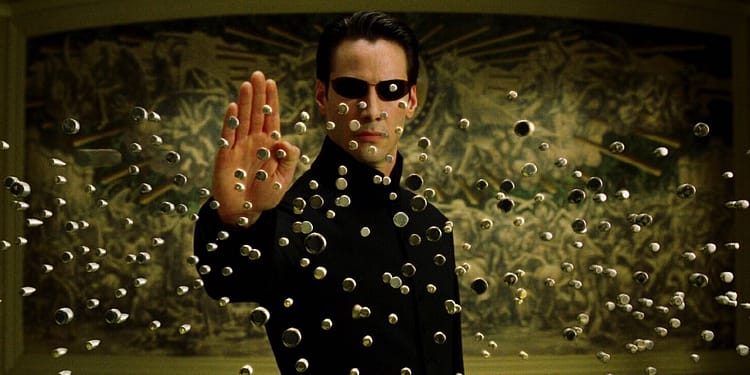Exploring the World of Visual Effects
Dipublikasikan oleh Mawar pada
Types of Visual Effects (VFX)
Visual Effects (VFX) are integral to modern filmmaking, helping to bring fantastical elements to life and create stunning visual experiences that captivate audiences. These effects are achieved through digital manipulation and computer-generated imagery (CGI), enabling filmmakers to craft scenes that go beyond the capabilities of practical effects. Below are the key types of VFX commonly used in the film industry, along with detailed explanations of each:
1. Compositing
Compositing is the process of combining multiple visual elements into a single cohesive image. This technique is commonly used to integrate live-action footage with digital elements like backgrounds, creatures, or explosions. By using compositing, filmmakers can create scenes that blend real-world and computer-generated components seamlessly, allowing for a more immersive experience for the viewers.
Examples of Compositing:
Using green screens (chroma keying) to replace backgrounds with digital environments.
Rotoscoping to extract characters from one shot and place them into another, ensuring perfect alignment with the scene.
2. CGI (Computer-Generated Imagery)
CGI involves creating digital images, objects, or characters entirely from scratch using computer software. CGI is frequently used to generate creatures, environments, and objects that are impossible or impractical to film in real life. It has become an essential part of filmmaking, providing filmmakers the ability to create elaborate worlds that captivate and engage the audience.
Examples of CGI:
Characters like Gollum in The Lord of the Rings, created through sophisticated CGI techniques to capture movement and emotion.
Virtual worlds such as Pandora in Avatar or the Matrix in The Matrix, which would be impossible to capture through traditional filming methods.
3. Motion Capture (MoCap)
Motion Capture is a technique where the movements of actors or objects are recorded using sensors and markers. These movements are then transferred to a digital model, allowing for highly realistic animation of digital characters. MoCap is particularly useful for creating lifelike movements in creatures or characters that interact with humans. It ensures the animation of these characters feels grounded and relatable.
Examples of Motion Capture:
Characters like King Kong in King Kong (2005), or the Na’vi in Avatar, whose movements were captured to create fluid, realistic animations.
Superheroes in films like Avengers, whose acrobatic feats are brought to life through MoCap technology.
4. Matte Painting
Matte Painting is used to create backgrounds or environments that would be difficult, impossible, or too costly to film. Historically, matte painting was done by hand, but today it is created digitally to produce realistic and expansive landscapes that enrich the visual storytelling of a film.
Examples of Matte Painting:
Expansive alien landscapes or cityscapes in sci-fi films such as Star Wars or The Lord of the Rings, bringing fictional worlds to life.
Imaginary or futuristic cities in films like Blade Runner, where digital matte paintings enhance the grand scale of the setting.
5. Particle and Simulation Effects
Particle Effects simulate natural phenomena or events such as smoke, fire, rain, and explosions. These effects are crucial for creating realistic environmental interactions, especially in action sequences or disaster films. They make the on-screen events more engaging and intense by adding depth and movement to the scene.
Examples of Particle Effects:
Explosions and fire effects used in action-packed sequences, enhancing the realism of the destruction.
Weather effects such as rain, snow, and fog, used to add atmospheric tension or convey a certain mood.
Simulations also include the modeling of physical interactions, such as the destruction of buildings, fluid dynamics, and natural disasters, which require the use of advanced physics to appear realistic.
6. Digital Matte (Background)
Digital Matte involves creating digital backgrounds or environments for a scene. It allows filmmakers to create realistic settings that could not be built physically, either because of time, cost, or technical limitations. This technique allows for the creation of expansive environments, all within the confines of a soundstage.
Examples of Digital Matte:
Creating futuristic cities or alien landscapes that would be impossible to construct physically, allowing for the seamless expansion of the world on-screen.
Adding elements to set extensions or enhancing natural landscapes to give the setting more depth and scale.
7. Set Extension
Set Extension is a technique that allows filmmakers to extend or expand a physical set digitally. This is used to create large-scale environments or settings that are either too expensive or impractical to build in real life. With set extensions, filmmakers can make scenes appear much grander than the physical space they are working with.
Examples of Set Extensions:
Creating massive futuristic cities or alien worlds in films like Blade Runner 2049, where digital set extensions expand the scope of the environment.
Expanding a physical set to show large, digital environments like outer space or historical landscapes, which adds to the epic feel of the story.
8. Face Replacement
Face Replacement is a technique where an actor’s face is digitally replaced with another, or a digital face is added to the scene. This is often used for dangerous stunts or to bring back characters in films who are no longer with us. This technique can be used to maintain continuity in scenes or to seamlessly integrate a digital representation of an actor.
Examples of Face Replacement:
Replacing an actor’s face during dangerous action scenes, such as car crashes or high-risk stunts, while ensuring the shot remains consistent.
Bringing back a deceased actor’s likeness, like in Star Wars: Rogue One, where Peter Cushing’s face was digitally recreated to reprise his character.
Each type of Visual Effect (VFX) serves a unique role in enhancing the storytelling and visual quality of a film. By combining art and technology, VFX helps filmmakers bring their creative visions to life in ways that were once unimaginable. As VFX technology continues to evolve, the possibilities for creating breathtaking visuals in film are boundless.

0 Komentar